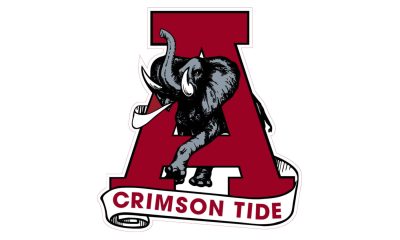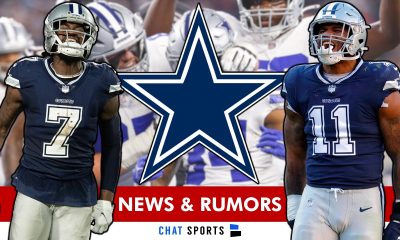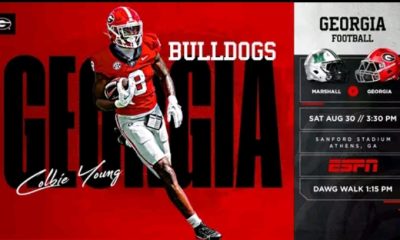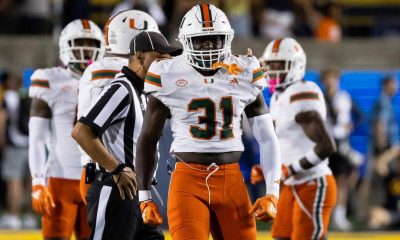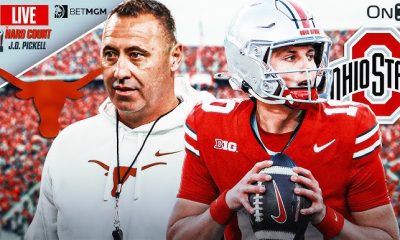College football
Miami Hurricanes QB Carson Beck at Center of NIL Storm as Deal Figures Spark Heated Debate…

Miami Hurricanes QB Carson Beck at Center of NIL Storm as Deal Figures Spark Heated Debate…
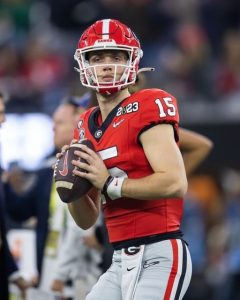
The University of Miami football program has always been no stranger to the spotlight, but this time it isn’t the Hurricanes’ on-field performance drawing national attention. Instead, it is quarterback Carson Beck, the highly touted transfer from Georgia, whose Name, Image, and Likeness (NIL) deal has become one of the most talked-about topics in college football.
When Beck announced his move to Miami earlier this year, reports immediately surfaced claiming that his NIL package was worth an eye-popping $4 million, a figure that positioned him among the top earners in the nation. The headlines created both excitement and controversy, as fans and analysts debated whether the quarterback’s on-field résumé matched such a staggering valuation.
But in the weeks since, new details have emerged that suggest the truth is slightly different. According to updated figures, Beck’s deal is closer to the range of $3 to $3.2 million rather than the originally reported $4 million. While still an enormous sum for a college athlete, the correction has sparked a wider conversation across the sport—about not only Beck’s value but also the rapidly evolving NIL marketplace itself.

Carson Beck was already a well-known name before he set foot in Coral Gables. At Georgia, he served as a backup during their 2022 national championship campaign and later developed into a capable starter. His combination of size, arm talent, and poise made him a coveted player once he entered the transfer portal. Miami, in desperate need of stability at quarterback after years of inconsistency, saw Beck as the ideal fit.
That background helps explain why he commanded such a lucrative NIL arrangement. The Hurricanes are banking on him not just to win games, but to energize the fan base, boost ticket sales, and raise Miami’s national profile. However, critics point out that Beck is not yet a proven superstar on the level of past Hurricanes legends, which is why the size of his compensation has generated such intense scrutiny.

NIL Economy Under the Microscope
The Beck situation has become symbolic of the broader NIL debate gripping college athletics. Since NIL rules were officially reformed in 2021, athletes have been free to profit from their personal brands through endorsements, sponsorships, and other business ventures. While the move has been widely celebrated as a win for player rights, it has also introduced new challenges, particularly around transparency and fairness.
For Miami, Beck’s deal underscores both the opportunities and the risks of the NIL era. On one hand, the Hurricanes are demonstrating that they can compete with powerhouse programs by offering competitive packages to elite talent. On the other hand, the speculation about whether Beck is “worth” the money raises concerns about inflated markets and potential locker-room tensions.
“It’s not just about one player,” a South Florida sports radio host commented this week. “It’s about how these massive deals reshape team dynamics, recruiting battles, and fan expectations. Beck might end up justifying every penny—or he might be remembered as a cautionary tale of NIL hype.”

The Hurricanes fan base has been quick to weigh in on the news. Some supporters view Beck’s NIL earnings as a bold statement of intent from Miami, a program determined to return to national prominence. They argue that in today’s college football landscape, attracting and keeping top talent requires deep pockets and aggressive investment.
Others, however, remain skeptical. Online forums and social media feeds have been filled with debates over whether the program might be overextending itself financially for a player who has yet to lead a team to a major postseason victory. The revised figure of $3 million, while slightly less staggering than $4 million, has done little to quiet the discussion.
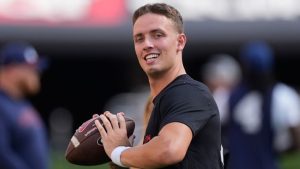
For Beck himself, the NIL chatter is both a blessing and a burden. On the one hand, the financial security and recognition validate his hard work and marketability. On the other, the outsized attention ensures that every snap he takes in a Hurricanes jersey will be scrutinized through the lens of his contract.
Miami opens its 2025 campaign with high expectations. Head coach Mario Cristobal has emphasized a renewed focus on discipline, defense, and quarterback efficiency. With Beck at the helm, the Hurricanes believe they can compete with ACC rivals and potentially make a push for the College Football Playoff.
But the quarterback will face pressure unlike any he has experienced before. Every touchdown will be celebrated as proof that Miami invested wisely. Every mistake, however small, will fuel critics who claim his NIL valuation is out of proportion to his accomplishments.

What It Means for Miami and College Football
Ultimately, the debate around Carson Beck’s NIL compensation represents more than just a local storyline—it is a case study in the growing pains of modern college football. Programs like Miami must navigate an environment where financial deals are now intertwined with recruiting, roster management, and public relations.
If Beck thrives and leads Miami to success, his deal may be remembered as a savvy investment that signaled the Hurricanes’ resurgence. If he struggles, however, the controversy could serve as evidence of the dangers of an overheated NIL market.
Either way, all eyes will be on Coral Gables this fall. Carson Beck’s arm may decide Miami’s fate on the field, but it is his paycheck that has already reshaped the conversation around the program and possibly the future of college football itself.
-
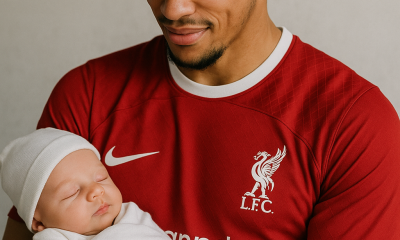
 Liverpool News4 months ago
Liverpool News4 months ago5 Minutes AGO: A Poor Newborn Baby Was Abandoned in a Park Near His Home After The Leicester City Game, in Response To This Heartbreaking Situation, Star Trent Alexander Arnold Stepped In to Become The Child’s Guardian, Pledging To Pay All Living Expenses Until The Child Turns 18….
-

 Liverpool News4 months ago
Liverpool News4 months ago“He Spoke To Me”: Trent Alexander-Arnold breaks Silence on Real Madrid Snub and Finally Reveal The Reason Why He’s Staying at Liverpool After an Advice From….
-
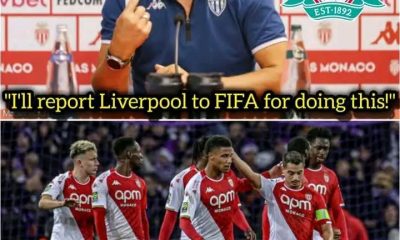
 Liverpool News4 months ago
Liverpool News4 months ago“He visited my office yesterday to inform me about his decision to return to the Anfield this summer. I am not only disappointed in him, but I will also report Liverpool to FIFA for attempting to deceive us.” His return to Liverpool by the summer has been confirmed, but a major issue remains unresolved. HAVING NETTED 15 GOALS IN 6 MATCHES THE MONACO COACH IS DISAPPOINTED IN HIM RETURNING TO LIVERPOOL…..
-

 Liverpool News4 months ago
Liverpool News4 months agoBREAKING NEWS: live from Fabrizio romano, “LET ME GO” Liverpool target set to hand in transfer request to join Liverpool with immediate effect. He said, “I’ve made it clear to the club—I want to leave. The moment I heard Liverpool were interested, my mind was made up. This is a club you don’t say NO to, and I won’t risk waiting around. This is my career, my future, and I’m taking control of it. I’m handing in a transfer request because I want to wear that red shirt. Let me go—this isn’t a request, it’s a warning. My decision is final. It’s Liverpool or nothing.” Yes this is the kind of players we want who want to play for the club and not for the money get him for us immediately the fans are celebrating….
-
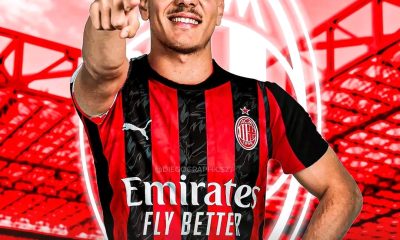
 Featured2 months ago
Featured2 months ago🚨𝐄𝐒𝐂𝐋𝐔𝐒𝐈𝐕𝐀: ARDON JASHARI SARÀ UN NUOVO GIOCATORE DEL MILAN! 🚨 ✅ Accordo totale tra Club Brugge e AC Milan per Ardon Jashari! 🔴⚫️ Il trasferimento si chiuderà su una cifra tra i 37 e i 40 milioni di euro, inclusi bonus, oltre a una percentuale sulla futura rivendita. 💼 Contratto fino almeno al 2030, con stipendio stimato tra 2 e 3,5 milioni a stagione 📝 🔥 Ardon Jashari sarà rossonero. Un colpo chiave per il centrocampo del Milan ✅🔴⚫️
-
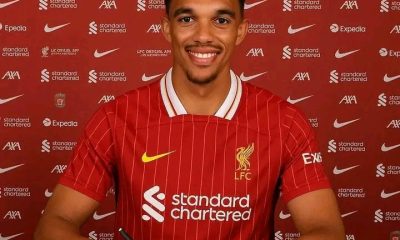
 Liverpool News4 months ago
Liverpool News4 months agoIT’S FINALLY OFFICIAL:Trent Alexander-Arnold signs a new long-term contract with Liverpool Amid Motivational Goal Scored Against Leicester City, keeping him at the club until 2028….
-
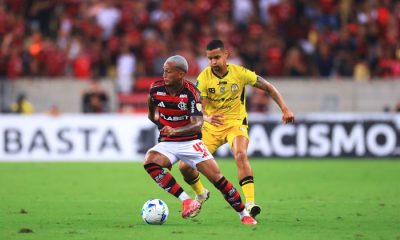
 Featured2 months ago
Featured2 months ago🚨 ULTIM’ORA: CAOS IN SERIE A – La Roma starebbe elaborando un piano terrificante e minaccioso per strappare il difensore brasiliano alla Juventus, ma Tudor ha lanciato un avvertimento chiaro e diretto al club giallorosso, secondo quanto riportano alcune fonti…
-
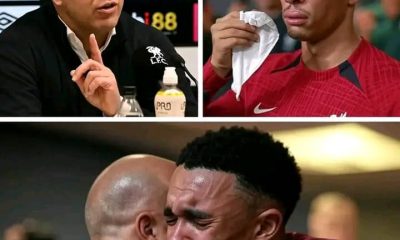
 Liverpool News5 months ago
Liverpool News5 months agoBREAKING NEWS: Arne Slot Makes Surprise Statement On Trent Alexander-Arnold’s Remaining Games for Liverpool After What Transpired On…

